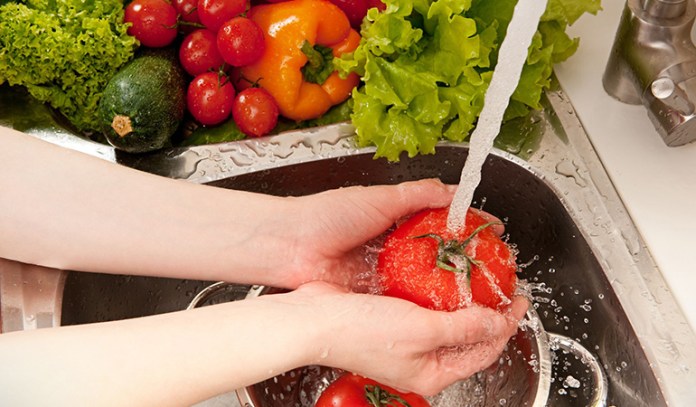Whether you are a working professional or a homemaker, cooking and preparing food for yourself or family is an important part of a daily routine.
Most of us have busy schedules and dedicate one day to grocery shopping. We purchase most of the products and produce we need for the following week, from cosmetics to vegetables and meat. And if it’s on sale, we needn’t think twice about purchasing too many items!
But, did you know that disease-causing bacteria can grow in perishable foods like fruits and vegetables within two hours if they are not refrigerated?1
That’s right, perishable foods require refrigeration in about an hour’s time after purchase. Besides, I think you’d agree that there is nothing more discouraging than cooking with rotting produce.
Before skipping to the tips, let’s examine the different types of food based on their perishability.
Classification Of Foods Based On Perishability

Food can be divided into three basic categories based on their perishability. These are as follows:
- Perishable foods: These foods cannot be stored for more than one to two days at room temperature. So, foods in this category require some refrigeration to increase their shelf life. Milk is a good example belonging to this category.
- Semi-perishable foods: Semi-perishable goods do not require refrigeration, but still have a limited shelf life. They may be safe to use for a couple of weeks. Some of the examples include potatoes, onions, pumpkins, etc.
- Nonperishable foods: All foods deteriorate over time; however, some may last longer than perishable and semi-perishable foods. Hence, they are called nonperishable commodities. Flour, spices, nuts, etc are some of the examples.
So, if you want to enjoy the best value for money and cook a tasty, healthy meal with fresh produce, consider following these tips.
1. Buy Local Produce Whenever Possible

Most of us are aware of the drawbacks of purchasing foods from the supermarkets, especially the perishables.
Quality of food may not be as good as those from local farmers because there is time taken to ship the commodities and to store them. Some may even be exposed to chemicals to keep them looking fresh for a longer duration.
Therefore, as much as possible, purchase fruits, vegetables, and other perishable foods from a local farmer.
2. Be Alert For Spoiled Foods

It is important to be smart when you purchase your foods. You cannot expect your apples to stay fresh if they are already damaged in the first place.
Anything that smells or looks suspicious should not end up in your shopping basket. So, keep an eye out for damaged foods – a brownish color, peeled or wrinkled skin, molds, etc. are a few signs of spoiled foods.
Being alert and purchasing the best ones can improve the shelf-life of your foods at home, provided they are stored correctly.
3. Wash Foods Only When Required

It is important to remember that fruits, vegetables, and other perishable foods should be washed thoroughly only before consuming them.
They should not be washed under running water before being stored as washing speeds up the process of spoilage. So, store foods at room temperature or in the refrigerator and wash them only before cutting or cooking.
4. Check Labels For Expiry Dates

To enjoy the best flavor and quality of a food product, always check the label for the product’s expiry date.
Most often pre-packed foods carry either a “use by” or “best before” date on their labels. Although some foods may smell fine even after their expiration dates, they may not have the same quality. They may contain microorganisms that can make you ill in a few days.
The expiration labels are worded differently for a reason. Here’s what you need to know:2
- Certain foods are labeled “use by” as they may deteriorate more quickly than other foods. It may be dangerous to consume a product that is past its “use by” date.
- On the other hand, food products with “best before” labels may have a longer life than the former. These show how long the food can retain its quality.
5. Store Foods Appropriately

Most perishable foods, as mentioned earlier, require some form of refrigeration. The first thing to keep in mind is the condition of your refrigerator.
Make sure the refrigerator is clean and in working condition and set the temperature to 5 °C or below.3
Raw food and cooked food should be stored separately in the fridge. Raw food like meat should be stored in closed containers and should be placed at the bottom, below the cooked foods.
This is because bacteria from raw food can contaminate cooked food and can cause illness.4
Dry foods like pasta, nuts, and rice do not require refrigeration but should be stored in clean, dry containers.
6. Freeze Foods For Future Use

If you are certain about not cooking with some foods in the week, then the best thing to do to preserve their freshness is to keep them safe in the freezer.
Freezing does not kill all bacteria, but it can definitely stop them from growing. If food is kept frozen properly and cooked well, it is safe.5 However, the taste and texture of food can change if they are kept frozen for too long.
All these tips can help you keep you preserve your foods’ freshness for much longer than you expect. Make sure you follow these and, perhaps, cooking could be a lot more fun!
References





